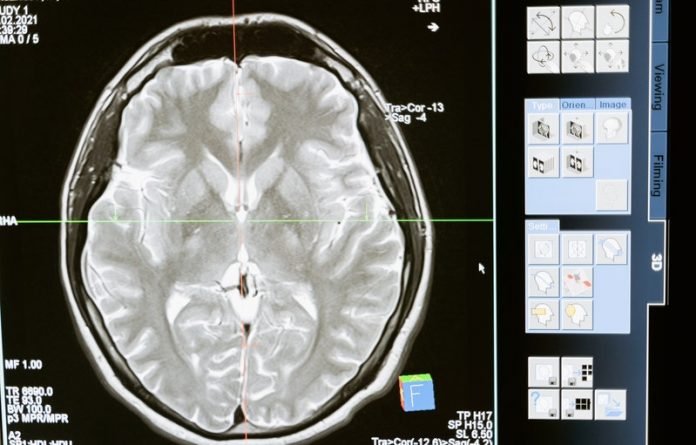
Various disorders and factors contribute to the development of dementia.
Neurodegenerative disorders result in a progressive and irreversible loss of neurons and brain functioning.
There are three types of frontotemporal disorders (FTD): behavioral variant frontotemporal dementia (bvFTD), primary progressive aphasia (PPA), and movement disorders.
Behavioral variant frontotemporal dementia
The most common FTD, bvFTD, involves changes in personality, behavior, and judgment. People with this disorder may have problems with cognition, but their memory may stay relatively intact. Symptoms can include:
Problems planning and sequencing (thinking through which steps come first, second, and so on)
Difficulty prioritizing tasks or activities
Repeating the same activity or saying the same word over and over
Acting impulsively or saying or doing inappropriate things without considering how others perceive the behavior
Becoming disinterested in family or activities they used to care about
Over time, language and/or movement problems may occur, and the person living with bvFTD will need more care and supervision.
Primary progressive aphasia
PPA involves changes in the ability to communicate — to use language to speak, read, write, and understand what others are saying.
This includes difficulty using or understanding words (aphasia) and difficulty speaking properly (e.g., slurred speech).
People with PPA may have one or both of these symptoms. They may become mute or unable to speak.
Many people with PPA develop symptoms of dementia. Problems with memory, reasoning, and judgment are not apparent at first but can develop over time.
In addition, some people with PPA may experience significant behavioral changes, similar to those seen in bvFTD, as the disease progresses.
There are three types of PPA, categorized by the kind of language problems that appear first.
Semantic PPA: A person slowly loses the ability to understand single words and sometimes to recognize the faces of familiar people and common objects.
Agrammatic PPA: A person has more and more trouble speaking and may omit words that link nouns and verbs (such as to, from, the).
Eventually, the person may no longer be able to speak at all. The person may eventually develop movement symptoms similar to those seen in corticobasal syndrome.
Logopenic PPA: A person has trouble finding the right words during a conversation but can understand words and sentences. The person does not have problems with grammar.
Researchers do not fully understand the biological basis of the different types of PPA. But they hope one day to link specific language problems with the changes in the brain that cause them.
Movement disorders
Two rare neurological movement disorders associated with FTD, corticobasal syndrome and progressive supranuclear palsy, occur when the parts of the brain that control movement are affected.
The disorders may affect thinking and language abilities, too.
Corticobasal syndrome can be caused by corticobasal degeneration — a gradual atrophy and loss of nerve cells in specific parts of the brain.
This degeneration causes progressive loss of the ability to control movement, typically beginning around age 60.
The most prominent symptom may be apraxia, the inability to use the hands or arms to perform a movement despite normal strength, such as difficulty closing buttons or operating small appliances.
Other symptoms can include muscle rigidity and difficulty swallowing. Symptoms may appear first on one side of the body, but eventually both sides are affected.
Occasionally, a person with corticobasal syndrome first has language problems or trouble orienting objects in space and later develops movement symptoms.
Not everyone who has corticobasal syndrome has problems with memory, cognition, language, or behavior.
Progressive supranuclear palsy causes problems with balance and walking.
People with the disorder typically move slowly, experience unexplained falls, lose facial expression, and have body stiffness, especially in the neck and upper body — symptoms similar to those of Parkinson’s disease.
A hallmark sign of this disorder is trouble with eye movements, particularly looking down. These symptoms may give the face a fixed stare. Problems with behavior, memory, problem solving, and judgment can also develop.
Other movement-related types of FTD include frontotemporal dementia with parkinsonism and frontotemporal dementia with amyotrophic lateral sclerosis (FTD-ALS).
Frontotemporal dementia with parkinsonism can be an inherited disease caused by a genetic tau mutation.
Symptoms include movement problems similar to those of Parkinson’s disease, such as slowed movement, stiffness, and balance problems, and changes in behavior or language.
FTD-ALS, also called FTD with motor neuron disease, is a combination of bvFTD and ALS, the latter commonly known as Lou Gehrig’s disease.
In addition to the behavioral and/or language changes seen in bvFTD, people with FTD-ALS experience the progressive muscle weakness seen in ALS, fine jerks, and wiggling in muscles.
Symptoms of either disease may appear first, with other symptoms developing over time. Mutations in certain genes have been found in some people with FTD-ALS, though most cases are not hereditary.
If you care about dementia, please read studies about metal that may reduce risk of dementia, and cataract removal may reduce the dementia risk by 30%.
For more information about dementia, please see recent studies about factors that could help people get away from dementia, and results showing high blood pressure may lower dementia risk for some old adults.



